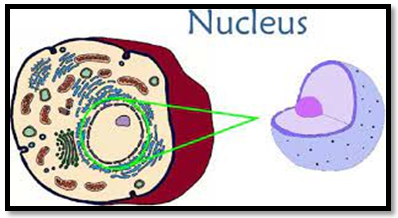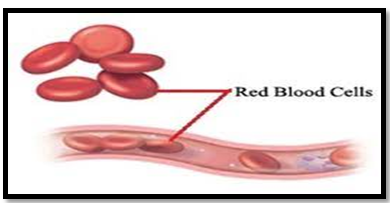

Biotechnology

Every living organism falls into one of two groups:
eukaryotes or prokaryotes. Cellular structure determines which group an
organism belongs to. In this article, we will explain in detail what
prokaryotes and eukaryotes are and outline the differences between the two.
Prokaryote
definition
Prokaryotes are unicellular
organisms that lack membrane-bound structures, the most noteworthy of which is
the nucleus. Prokaryotic cells tend to be small, simple cells, measuring around
0.1-5 μm in diameter.
While
prokaryotic cells do not have membrane-bound structures, they do have distinct
cellular regions. In prokaryotic cells, DNA bundles together in a region called
the nucleoid.
Here is a breakdown of what you might find in a
prokaryotic bacterial cell.
· Nucleoid: A central region of the cell that
contains its DNA.
· Ribosome: Ribosomes are responsible for
protein synthesis.
· Cell wall: The cell wall provides
structure and protection from the outside environment. Most bacteria have a
rigid cell wall made from carbohydrates and proteins called peptidoglycans.
· Cell membrane: Every prokaryote has a
cell membrane, also known as the plasma membrane, that separates the cell from
the outside environment.
· Capsule: Some bacteria have a layer of
carbohydrates that surrounds the cell wall called the capsule. The capsule
helps the bacterium attach to surfaces.
· Fimbriae: Fimbriae are thin, hair-like
structures that help with cellular attachment.
· Pili: Pili are rod-shaped structures
involved in multiple roles, including attachment and DNA transfer.
· Flagella: Flagella are thin, tail-like
structures that assist in movement.
Bacteria and archaea are the two types of prokaryotes.
Do prokaryotes have mitochondria?
No, prokaryotes do not have
mitochondria. Mitochondria are only found in eukaryotic cells. This is also
true of other membrane-bound structures like the nucleus and the Golgi
apparatus.
One theory for eukaryotic evolution hypothesizes that mitochondria were
first prokaryotic cells that lived inside other cells. Over time, evolution led
to these separate organisms functioning as a single organism in the form of a
eukaryote.
Eukaryote
definition
Eukaryotes are organisms
whose cells have a nucleus and other organelles enclosed by a plasma membrane.
Organelles are internal structures responsible for a variety of functions, such
as energy production and protein synthesis.
Eukaryotic cells are large (around 10-100 μm) and complex. While most
eukaryotes are multicellular organisms, there are some single-cell eukaryotes.
Within
a eukaryotic cell, each membrane-bound structure carries out specific cellular
functions. Here is an overview of many of the primary components of eukaryotic
cells.
·
Nucleus: The nucleus stores the genetic
information in chromatin form.
·
Nucleolus: Found inside of the nucleus, the
nucleolus is the part of eukaryotic cells where ribosomal RNA is produced.
·
Plasma membrane: The plasma membrane is
a phospholipid bilayer that surrounds the entire cell and encompasses the
organelles within.
·
Cytoskeleton or cell wall: The cytoskeleton or
cell wall provides structure, allows for cell movement, and plays a role in
cell division.
·
Ribosomes: Ribosomes are responsible for
protein synthesis.
·
Mitochondria: Mitochondria, also known as
the powerhouses of the cell, are responsible for energy production.
·
Cytoplasm: The cytoplasm is the region of the
cell between the nuclear envelope and plasma membrane.
·
Cytosol: Cytosol is a gel-like substance
within the cell that contains the organelles.
·
Endoplasmic reticulum: The endoplasmic
reticulum is an organelle dedicated to protein maturation and transportation.
·
Vesicles and vacuoles: Vesicles and vacuoles
are membrane-bound sacs involved in transportation and storage.
Other common organelles found in many, but not all, eukaryotes include
the Golgi apparatus, chloroplasts and lysosomes.
Prokaryote vs eukaryote: key differences
|
|
Prokaryote |
Eukaryote |
|
Nucleus |
Absent |
Present |
|
Membrane-bound
organelles |
Absent |
Present |
|
Cell
structure |
Unicellular |
Mostly multicellular; some
unicellular |
|
Cell
size |
Smaller (0.1-5 μm) |
Larger (10-100 μm) |
|
Complexity |
Simpler |
More complex |
|
DNA
Form |
Circular |
Linear |
|
Examples |
Bacteria, archaea |
Animals, plants, fungi,
protists |
Which of the following is a spherical structure
found in the center of animal cell?
a) cell membrane
b) nucleus
c) cytoplasm
d) cell wall

Nucleus constitutes about ……….of the
cell’s volume.
a) 10%
b) 20%
c) 40%
d) 60%
Which of the following is not a component of the nucleus?
a) Chromosome
b) Nucleolus
c) Cytoplasm
d) Nuclear envelope
In which of the following cell/s nucleus is absent?
a) uninucleate
b) enucleate
c) multinucleate
d) none of these
Red blood cells is the example of…………
a) uninucleate
b) enucleate
c) multinucleate
d) none of these
